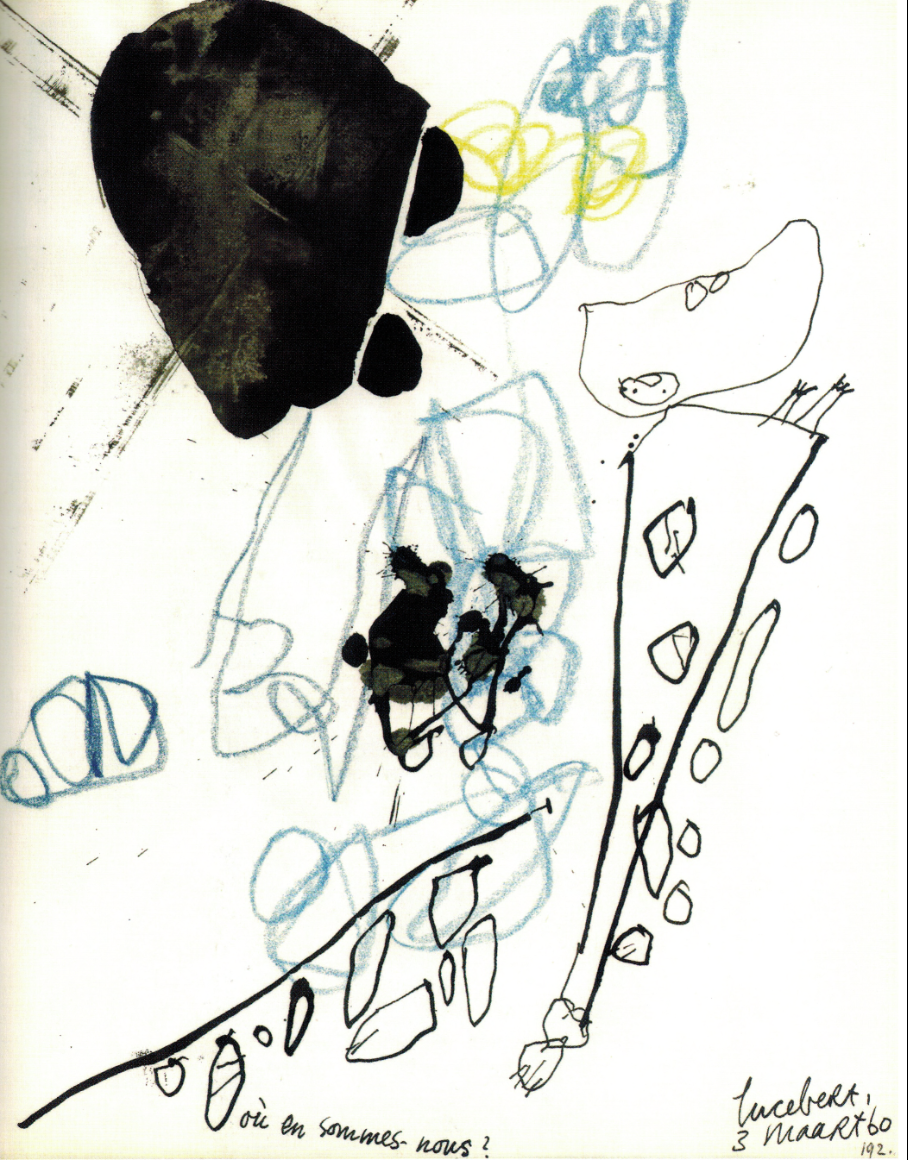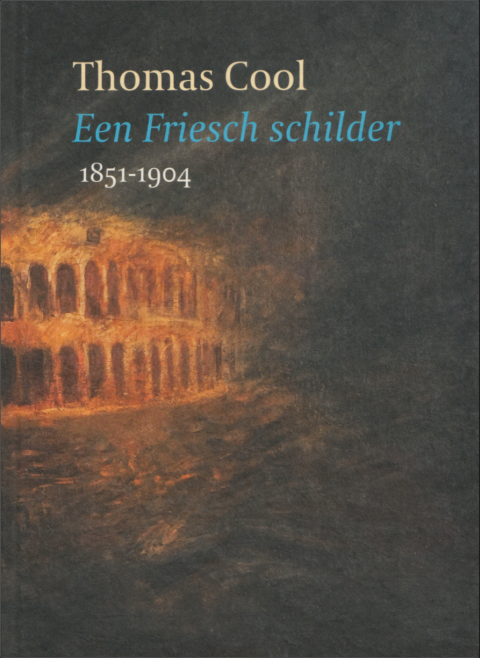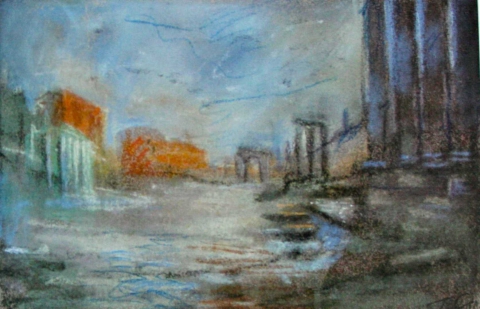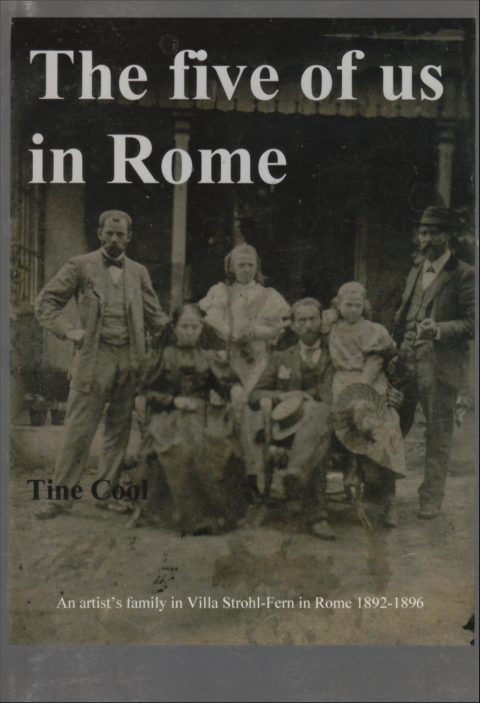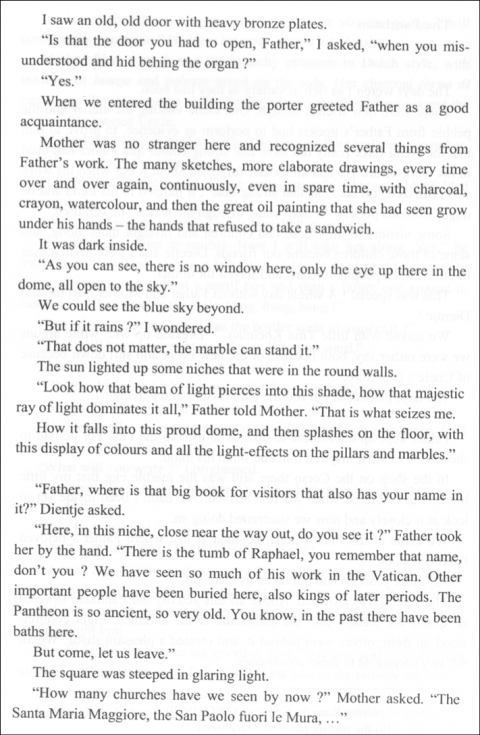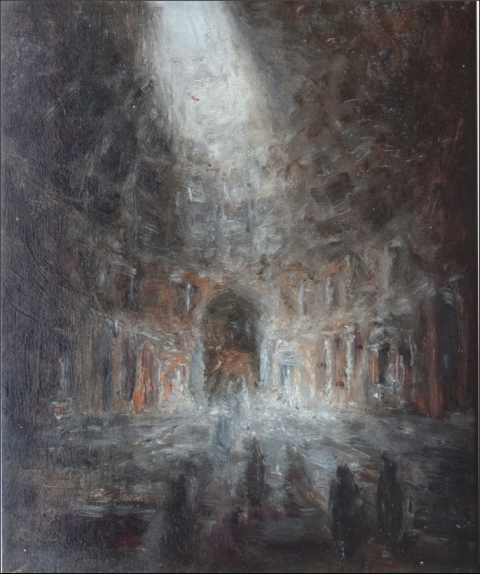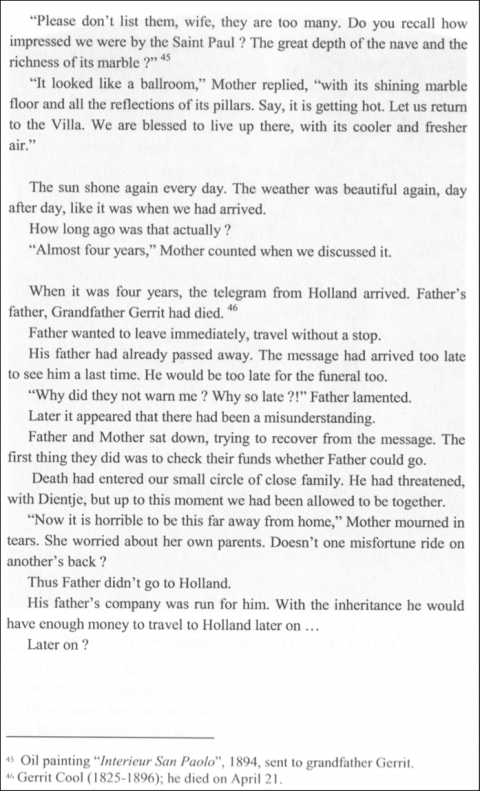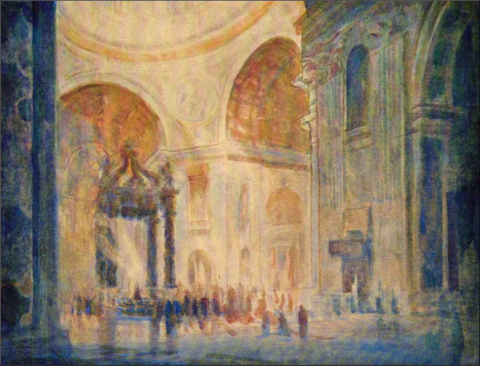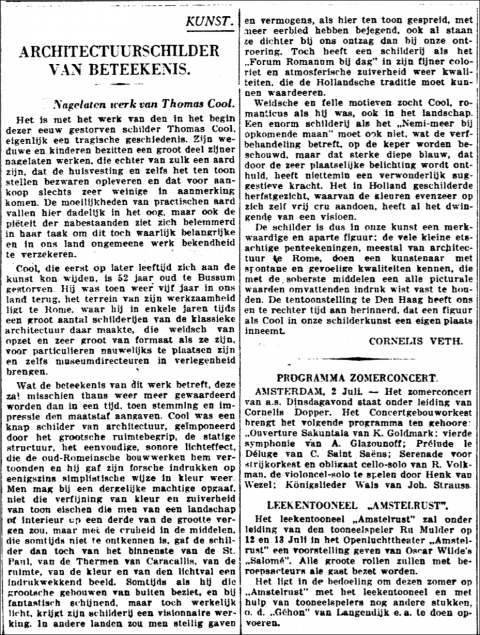Le peintre Thomas Cool
Années à la Villa Strohl-Fern
En 2010, une exposition rehaussée d’une publication d’un format original (1) a permis de redécouvrir le peintre Thomas Cool (1851-1904). Cet homme né en Frise a fait assez tardivement le choix de la vie artistique. Il a placé la Rome ancienne au cœur d’une œuvre à laquelle le Stedelijk Museum d’Amsterdam a consacré une rétrospective posthume en janvier-février 1916.
Th. Cool a laissé quelques traces dans la littérature néerlandaise. On pense que le personnage Duco van der Staal du roman Langs lijnen van geleidelijkheid (2) de Louis Couperus est en partie basé sur la figure de ce Hollandais qui affirmait « ne jamais peindre ce qu’il voyait, mais ce qui transportait ses yeux vers une vie plus élevée ». De son côté, Maurits Wagenvoort (1859-1944) a brossé un portrait du talentueux artiste (sous les traits du peintre Terhaer) et de ses proches dans son roman anarcho-parisien De droomers (Les Rêveurs, 1900). Cet écrivain, contemplant à nouveau des œuvres de son défunt ami en 1930 à l’occasion d’une exposition organisée à La Haye, réitère son admiration en parlant « d’une facette géniale de son inspiration ».
Forum Romanum, pastel
Mais c’est essentiellement grâce à Tine, l’une de ses filles, que les lecteurs ont mieux fait connaissance avec Thomas Cool. En 1928, la jeune femme publiait Wij met ons vijven in Rome dont une traduction anglaise a vu le jour récemment grâce à l’initiative d’un homonyme et arrière-petit-fils du peintre (3). Certes, l’ouvrage, qui a connu un réel succès, s’adressait à un jeune lectorat ; mais pour nous, il offre un témoignage sur une famille qui, de 1892 à 1896, a vécu dans le cadre privilégié de la Villa Strohl-Fern. L’Alsacien Alfred Wilhelm Strohl l’avait acquise en 1879 ; il l’aménagea pour en faire un point de chute pour des artistes. Ainsi, Rilke y a séjourné au début du XXe siècle. Légué au gouvernement français, le lieu a abrité à partir de la fin des années cinquante le Lycée Chateaubriand. En 2012, une exposition a remis en mémoire ce passé glorieux où la Villa accueillait nombre de personnages de renom.
Interieur du Dôme de Milan
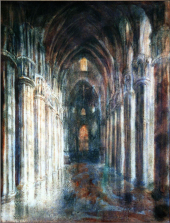 À l’époque où Th. Cool travaille à Rome, le critique d’art allemand Albert Zacher lui rend visite. Cette rencontre a inspiré à ce dernier une belle page publiée dans le Franfürter Zeitung du 9 juin 1895. Il est permis de penser que les hommes de lettres Gabriele D’Annunzio et René Doumic sont eux aussi passés par l’atelier du Frison. Dans la Ville Éternelle, la colonie hollandaise, que Couperus et Wagenvoort fréquentaient, comptait alors au moins deux autres artistes en vue : le sculpteur Piet Pander (1864-1919) et le paysagiste Romolo Koelman (1847-1920).
À l’époque où Th. Cool travaille à Rome, le critique d’art allemand Albert Zacher lui rend visite. Cette rencontre a inspiré à ce dernier une belle page publiée dans le Franfürter Zeitung du 9 juin 1895. Il est permis de penser que les hommes de lettres Gabriele D’Annunzio et René Doumic sont eux aussi passés par l’atelier du Frison. Dans la Ville Éternelle, la colonie hollandaise, que Couperus et Wagenvoort fréquentaient, comptait alors au moins deux autres artistes en vue : le sculpteur Piet Pander (1864-1919) et le paysagiste Romolo Koelman (1847-1920).
D. Cunin
(1) Willem Winters, Thomas Cool. Een Friesch schilder. 1851-1904, Leeuwarden, Perio, 2010.
(2) On peut en lire la traduction récente en anglais de la main de Paul Vincent : Inevitable.
(3) C.A. (Tine) Cool, The five of us in Rome. An artist’s family in Villa Strohl-Fern in Rome 1892-1896, traduit du néerlandais par Th. Cool, La Haye, 2011.
Quelques images de l’exposition « Artisti a Villa Strohl-Fern » (2012)
The five of us in Rome
QUATRIÈME DE COUVERTURE
The Five of us in Romeis the delightful story told by a young girl who arrives in Rome in 1892 almost 5 years old and who leaves in 1896 as a 9-year old. Her father is an art painter who rents an atelier with family living quarters in the Villa Strohl-Fern, a mansion full with other artists, situated in a lush park close to Villa Borghese and the Academies of Art - in this period still on the outskirts of Rome. The story received the prize of the best book for girls in 1928 in Holland.
Given the amassed artistic talent at the Villa Strohl-Fern and its particular role in art history Tine’s book has become a remarkable historical document as well. It relates about life at the Villa in its early years, and the family story connects with historical figures from this special place and period. This first translation in English includes many historical links that do not appear in the 1928 Dutch original.
Thomas Cool
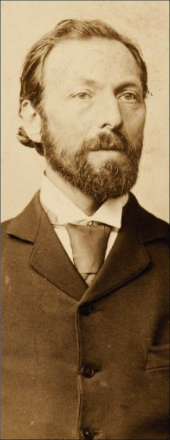 Around 1895 countries had kings and emperors, people rode in horse drawn carriages and steam trains, the telephone was only an invention. Nations had the Prix de Rome for their best young art talents to study in the Eternal City. Many of them later made a name. The painter from Holland is older and comes with his wife and three children, all paid for by his father, a manufacturer. He has his aim in art: “Rembrandt opened our eyes by painting directly what the world offers. He taught us his effects of light and dark. Above all, according to me, he embodies the phenomena in nature and the dramatic sentiment by which I experience the world.” When his daughter Dientje gets ill with malaria perniciosa he has to choose between his family and his desire of artistic fulfillment in Italy. All the while Tine’s eye and heart record how it is to be a young girl in a foreign land and in that garden between artists.
Around 1895 countries had kings and emperors, people rode in horse drawn carriages and steam trains, the telephone was only an invention. Nations had the Prix de Rome for their best young art talents to study in the Eternal City. Many of them later made a name. The painter from Holland is older and comes with his wife and three children, all paid for by his father, a manufacturer. He has his aim in art: “Rembrandt opened our eyes by painting directly what the world offers. He taught us his effects of light and dark. Above all, according to me, he embodies the phenomena in nature and the dramatic sentiment by which I experience the world.” When his daughter Dientje gets ill with malaria perniciosa he has to choose between his family and his desire of artistic fulfillment in Italy. All the while Tine’s eye and heart record how it is to be a young girl in a foreign land and in that garden between artists.
Tine’s style in Dutch is lofty and tinges on the formal. This English translation is more fluid but the lofty Father and Mother have been retained. This edition is not intended as a children’s book but is for readers with an interest in cultural history and the joy in life.
Tine Cool (1887-1944) was a garden architect and writer.
UN EXTRAIT
«The Pantheon », p. 111-114
Panthéon, Rome, huile
Th. Cool, Messe à Saint-Pierre
Cornelis Veth, « Architectuurschilder van beteekenis »
De Telegraaf, 3 juillet 1930
